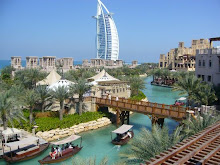
Holi, also called the Festival of Colours, is a popular Hindu spring festival observed in India, Suriname, Guyana, Trinidad, the UK, Fiji and Nepal. In West Bengal of India and Bangladesh, it is known as Dolyatra (Doljatra) or Boshonto Utsav ("spring festival").

The main day, Holi, also known as Dhulheti, Dhulandi or Dhulendi, is celebrated by people throwing coloured powder and coloured water at each other. Bonfires are lit the day before, also known as Holika Dahan (death of Holik) or Chhoti Holi (little Holi). The bonfires are lit in memory of the miraculous escape that young Prahlad had when Demoness Holika, sister of Hiranyakashipu, carried him into the fire. Holika was burnt but Prahlad, a staunch devotee of Lord Vishnu, escaped without any injuries due to his unshakable devotion.

The main day, Holi, also known as Dhulheti, Dhulandi or Dhulendi, is celebrated by people throwing coloured powder and coloured water at each other. Bonfires are lit the day before, also known as Holika Dahan (death of Holik) or Chhoti Holi (little Holi). The bonfires are lit in memory of the miraculous escape that young Prahlad had when Demoness Holika, sister of Hiranyakashipu, carried him into the fire. Holika was burnt but Prahlad, a staunch devotee of Lord Vishnu, escaped without any injuries due to his unshakable devotion.
Holi is celebrated on the full moon day in the month of Phalugna or Falguna (Phalgun Purnima), which usually falls in the later part of February or March. In 2009, Holi (Dhulandi) is on 11th March and Holika Dahan is on 10th March. Rangapanchami occurs a few days later on a Panchami (fifth day of the full moon), marking the end of festivities involving colours.

Rituals of Holi
The main emphasis of the festival is on the burning of the holy fire or Holika. The origin of the traditional lighting of Holi is attributed by some to the burning of demonesses like Holika, Holaka and Putana who represent evil, or to the burning of Madan according to others.

Rituals of Holi
The main emphasis of the festival is on the burning of the holy fire or Holika. The origin of the traditional lighting of Holi is attributed by some to the burning of demonesses like Holika, Holaka and Putana who represent evil, or to the burning of Madan according to others.

Dol Purnima (Rang Panchami), the festival of colour is celebrated with great festivity and joy. On this day, people come out wearing pure white clothes and gather together in a common place where they play it with gay abandon.

In India, Holi is regarded as one of the greatest festivals. Most of the Hindu festival is celebrated as the national festival and almost everyone celebrates it regardless of the religion i.e. even Muslims celebrate it. Christians may also join in although Holi mostly falls during their Lent season and many would not join in the festivities. The day of Holi is also one of the national holiday in India. People walk down their neighbourhoods to celebrate Holi by exchanging colours and throwing and splashing water to each other.
One of the most famous activities is throwing water balloon to each other also called Lola(meaning water balloon). Also a lot of people mix 'bhang' in their drinks and food as done in Shivaratri. It is believed that the combination of different colours played at this festival take all the sorrow away and make life even more colourful .
Festival of colours, Holi is celebrated with great fanfare in the Gujarat state of India. Falling on the full moon day in the month of Phalguna, Holi is a major Hindu festival and marks the agricultural season of the Rabi crop. Bonfire is also lit in the main squares of the villages, localities and colonies. People collect at the time of bonfire and celebrate the event, which is symbolic of the victory of good over evil by singing and dancing. Tribals of Gujarat celebrate Holi in great enthusiasm and dance around the fire.
Natural colours
The spring season, during which the weather changes, is believed to cause viral fever and cold. Thus, the playful throwing of natural coloured powders has a medicinal significance: the colours are traditionally made of Neem, Kumkum, Haldi, Bilva, and other medicinal herbs prescribed by Āyurvedic doctors. A special drink called thandai is prepared, sometimes containing bhang (Cannabis sativa). Unfortunately the commercial aspect of celebration has led to an increase in the use of synthetic colours which, in some cases, may be toxic.
The spring season, during which the weather changes, is believed to cause viral fever and cold. Thus, the playful throwing of natural coloured powders has a medicinal significance: the colours are traditionally made of Neem, Kumkum, Haldi, Bilva, and other medicinal herbs prescribed by Āyurvedic doctors. A special drink called thandai is prepared, sometimes containing bhang (Cannabis sativa). Unfortunately the commercial aspect of celebration has led to an increase in the use of synthetic colours which, in some cases, may be toxic.



















3 comments:
Such a nice blog to share for us to view my friend
Holi is fun for everyone
Decorate your homes on Holi
Post a Comment